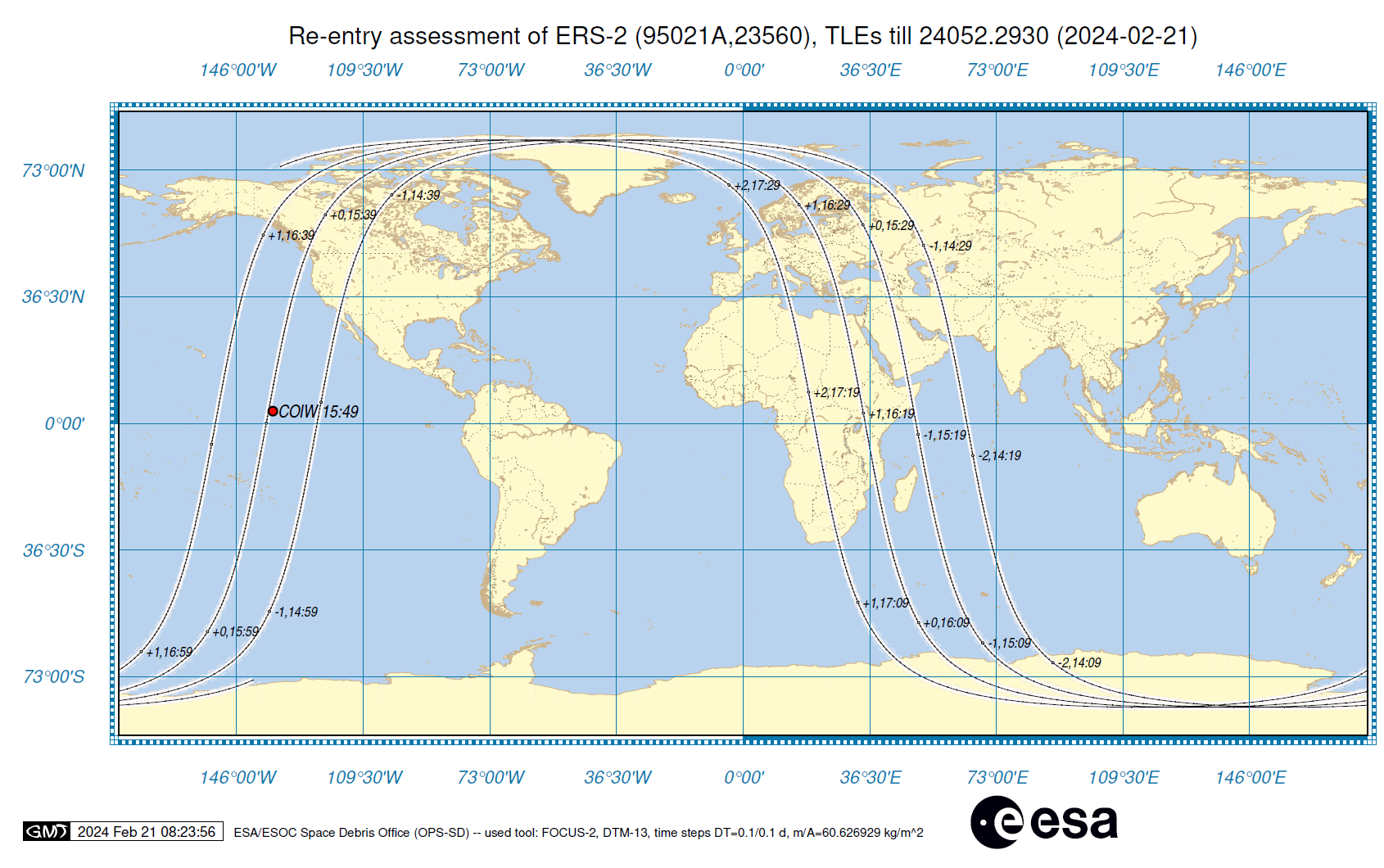|
|
Post by Admin on Feb 20, 2024 12:23:21 GMT
Satellite expected to fall to Earth on 21 February 2024ERS-2 REENTRY – LIVE UPDATES
blogs.esa.int/rocketscience/2024/02/05/ers-2-reentry-live-updates/
— UPDATE 20 FEBRUARY, 12:00 CET —
Using data acquired on 20 February 2024, ESA’s Space Debris Office currently predicts that the reentry of ESA’s ERS-2 satellite will take place at:
20:53 UTC (21:53 CET) on 21 February 2024
|
|
|
|
Post by Admin on Feb 21, 2024 10:19:05 GMT
That would be 10:49 AM New York time and 7:49 AM Los Angeles time. Right now it looks like the Pacific Ocean. — Update 21 February, 10:00 CET —
Using data acquired this morning, ESA’s Space Debris Office currently predicts that the reentry of ESA’s ERS-2 satellite will take place at:
15:49 UTC (16:49 CET) on 21 February 2024
The uncertainty in this prediction is now just +/- 1.76 hours.At the current predicted time of reentry, 15:49 UTC, 21 February, ERS-2 will be located approximately 80 km over the red marker, labelled COIW (centre of impact window). |
|
|
|
Post by Admin on Feb 21, 2024 10:51:32 GMT
Live ERS-2 Satellite Tracker
|
|
|
|
Post by Admin on Feb 22, 2024 15:33:45 GMT
www.youtube.com/watch?v=CFosVtBaBFUBBC News
Pioneering European ERS-2 satellite falls to Earth over Pacific
Feb 21, 2024
A European satellite that pioneered many of the technologies used to monitor the planet and its climate has fallen to Earth.
The two-tonne ERS-2 spacecraft burnt up in the atmosphere over the Pacific.
ERS-2 was one of a pair of missions launched by the European Space Agency in the 1990s to study the atmosphere, the land and the oceans in novel ways.
They monitored floods, measured continental and ocean-surface temperatures, traced the movement of ice fields, and sensed the ground buckle during earthquakes.
|
|